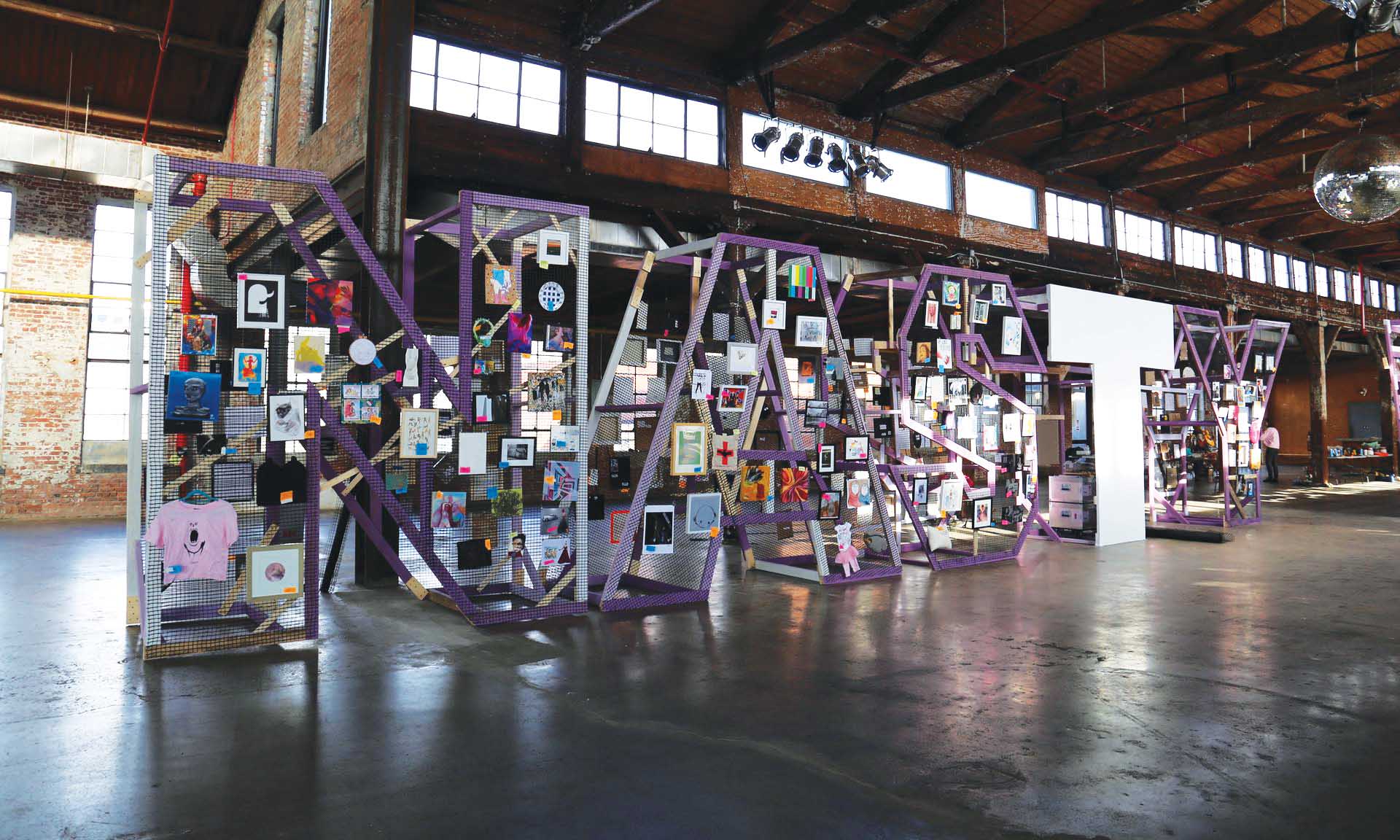
Courtesy of Jessaman Fiore
Local artists will add their voices to an international protest against President Donald Trump next month when they host an exhibition celebrating their identities as “nasty women.”
The Nasty Women Connecticut Art Exhibition, set to run from March 9 to April 8 at the Institute Library on Chapel Street, will serve as a forum in which artists and patrons can contemplate and resist challenges women might face under the new presidential administration, according to organizers. These challenges include the rollback of the Affordable Care Act, which funds birth control and prenatal care; the defunding of Planned Parenthood, which provides family-planning services; and the nomination of anti-choice justices to the Supreme Court.
The exhibition takes its name and concept from the Nasty Women Art Exhibition NYC, a group exhibition that ran in New York City just before Trump’s inauguration, which inspired an ongoing network of shows around the world. Cities that have already hosted exhibitions include San Francisco, Detroit, Phoenix and Brussels, and more are planned in cities such as Dallas, Amsterdam and Lisbon, Portugal. In all, more than 40 venues have confirmed that they will host exhibitions, and more confirmations are expected, according to Nasty Women NYC Co-director Roxanne Jackson.
Like the New York exhibition, the New Haven exhibition will be unjuried and will require no entry fee, meaning that anyone who wishes to participate and “identifies as a nasty woman or a nasty woman ally” can do so, said Sarah Fritchey, curator at the New Haven Artspace gallery and one of the New Haven exhibition’s main organizers.
The goal of the New Haven exhibition, Fritchey and other organizers said, is simply to demonstrate solidarity.
“We’re trying to make our voices, the voices of all women heard,” said Hamden artist Lucy McClure, another main organizer of the New Haven exhibition. “The art is a vehicle. There have been shows all over the country. By doing [this exhibition], we’re making that voice even louder.”
Artists within New Haven, as well as those who live elsewhere, are free to submit artwork. The open call applies to all gender identities, and though organizers are focusing on the display of visual and performative arts, artists who work in other media, such as writing, may also participate. Volunteers who would like to participate in ways other than contributing artwork can also sign up to assist with the exhibition installation and operation, according to the organizers.
As of Tuesday afternoon, the New Haven organizers had received 147 submissions. They are unsure of the final count, since the submission period extends to the exhibit installation on March 8, the day before the show opens.
The organizers timed the installation to coincide with International Women’s Day, which is also March 8. All participating artists will need to install their artwork themselves that day, both because the exhibition is volunteer-run and also to send a message about the collaborative spirit of the movement, said Valerie Garlick, the third main organizer.
“If you look at our icon, it’s a logo of a hand holding a hammer smashing through a white flower,” said Garlick, who is the executive director of the Institute Library. “The idea is that we’re capable of installing artwork ourselves, and so we’re going to organize this effort for artists to come in and install their own works.”
Funding for the New Haven exhibition will come entirely from donations. Taking a cue from the New York exhibition — which raised more than $42,000 for Planned Parenthood, largely through the sale of artwork as well as through donations — the New Haven organizers plan to donate any excess money raised to Planned Parenthood of Southern New England.
Garlick, McClure and Fritchey began working together on the exhibition after McClure saw the Facebook event for the original New York exhibition and began emailing around artist circles to drum up interest. This spirit of community organizing mirrors that which motivated Jackson and her co-director, Jessamyn Fiore, to put together the exhibition in New York, which they started with a Facebook post.
“After Trump was elected, I was practically unable to get out of bed in the morning and function,” Jackson said. “Luckily, that Saturday I was able to go to a protest. … During that time, that’s when my emotions began to shift … to a place of feeling empowered, and emboldened, and pissed off, and enraged. Those latter emotions are when action can really happen, when the fire is ignited.”
The next Monday, Jackson made the initial Facebook post, which went “absolutely viral” and kicked off the wave of exhibition organizing that continues today.
The New Haven organizers plan to capitalize on that enthusiasm by stretching the movement in New Haven and Connecticut beyond next month’s Nasty Women exhibition. Their plans are still tentative, but Garlick said the trio is thinking of hosting a series of exhibitions over the next four years — during Trump’s tenure — and perhaps also starting a reading group.
The most recent organizing meeting for the New Haven Nasty Women exhibition took place Tuesday night.







